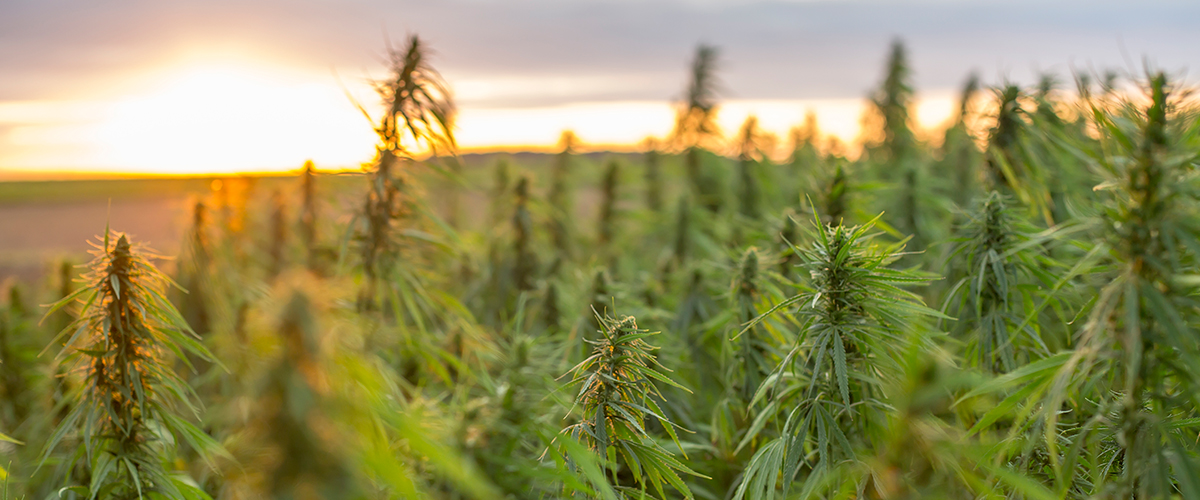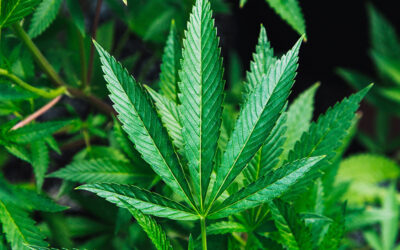Cannabinol (CBN) is one of the more than 100 cannabinoids found in cannabis that interact with the body’s systems to promote health and wellness.
Those who use cannabis are no doubt familiar with the plant’s more well-recognizable cannabinoids like cannabidiol (CBD) and tetrahydrocannabinol (THC). They are the most widely understood and researched compounds in the plant. But there are more than 100 more that interact with the body’s systems, including cannabinol (CBN).
More research into CBN and CBN effects is greatly needed, but this little-known cannabinoid has shown that it may have several potential health benefits that make it deserve more attention. Time will tell, but as studies into cannabis and its effects expand, CBD and THC may have to start sharing some of the plant’s attention with CBN and other cannabinoids found in the plant.
In this article, we’ll get you more familiar with CBN. You’ll find a cannabinol definition, as well as explanations on what we know about CBN effects, CBN benefits, and whether CBN is legally accessible.
What is Cannabinol?
Cannabinol, commonly abbreviated as CBN, is a mildly psychoactive compound found in cannabis. Like CBD and THC, CBN is what’s known as a cannabinoid, a class of active compounds produced by the cannabis plant that interact with the body’s endocannabinoid system to trigger cannabis’ beneficial effects and promote homeostasis and systemic balance.
CBN is the very first cannabinoid to be identified by scientists. At the end of the 19th century, researchers were able to isolate CBN from a red oil cannabis extract. In the early 1930s, researcher R.S. Cahn clarified CBN’s molecular structure. Less than a decade later, R. Adams in the United States and Lord Todd in the United Kingdom first achieved CBN’s chemical synthesis.2
CBN is a byproduct of THC and was initially thought to be responsible for the intoxicating effects of cannabis before scientists discovered THC and became familiar with its euphoric properties. CBN is known as the “sleepy” cannabinoid because of anecdotal evidence and some research findings suggesting it has sedating effects, although newer studies question those findings.
Where Does Cannabinol Come From?
CBN stems from cannabigerolic acid (CBGA), the foundational compound from which other cannabinoids come from. CBGA, the first cannabinoid to form in cannabis plants, is eventually broken down by enzymes into cannabidiolic acid (CBDA), tetrahydrocannabinolic acid (THCA), and cannabichromenic acid (CBCA), which are then converted to the active cannabinoids, CBD, THC, and CBC.
CBN is created as a result of THC gradually breaking down over time or when exposed to air and light. As cannabis flowers that are high in THC get older, the THC compounds found in the plant degrade into CBN. CBN can also be produced from THC that has already been extracted from cannabis.
For that reason, there is relatively little, if any, CBN found in a live growing cannabis plant or raw cannabis that’s been freshly harvested. CBN is instead usually present in higher amounts in older cannabis. It also means that cannabis products made from hemp, which naturally contains only trace levels of THC, will have very little CBN.
CBN Benefits
Researchers still have a ways to go to fully understand CBN effects and how CBN works in the body.
Like all cannabinoids, CBN elicits its effects by interacting with the body’s endocannabinoid system, a naturally-occurring signaling network responsible for keeping functions in homeostasis and running optimally.
Once absorbed by the body and delivered to your bloodstream, CBN is thought to primarily bind with the endocannabinoid system’s cannabinoid 2 receptors (CB2), but it appears that CBN also binds with and activates cannabinoid 1 receptors (CB1) like THC does, and may even enhance the euphoric effects of THC.1
CBN also appears to act as an agonist to the TRPV-2 vanilloid receptor, a protein responsible for regulating an array of biological systems in the body, such as body sensations and responses to environmental stimuli.3
The goal for all cannabinoids in their interaction with the body’s endocannabinoid system is to restore and maintain balance. Through its interaction with cannabinoid receptors, CBN sends chemical messages between nerve cells and influences the release of neurotransmitters and hormones with the objective of keeping the body performing at its best.
CBN also likely works in synergy with other cannabinoids and cannabis-derived compounds to enhance the natural wellness benefits of cannabis. This theory is referred to as the “entourage effect” and it describes how the full-spectrum of cannabinoids, terpenes, flavonoids, and other natural compounds found within the cannabis plant work together as they interact with the body.
CBN Effects
CBN is generally considered non-intoxicating, meaning that the cannabinoid in most cases will not cause euphoric effects. Studies do indicate that CBN interacts has more psychoactive properties than CBD, but very little compared to the properties of THC.
CBN is widely known anecdotally as a super-sedative, and some early evidence backs those effects. However, some research suggests that CBN alone isn’t responsible for the drowsiness effects of cannabis.
One human study conducted back in the 1970s concluded that using CBN alone doesn’t cause sleepiness. That same study found that THC alone caused some drowsiness and THC with CBN together caused even more drowsiness, suggesting that the sedative effects cannot be attributed to CBN alone.1
CBN Oil and CBN Isolate
Most cannabis consumers looking to increase their intake of CBN will simply rely on older cannabis. However, some cannabis manufacturers are beginning to offer CBN products, including CBN oil and CBN isolate, which can then be formulated into CBN capsules, CBN edibles, and CBN tinctures.
Cannabinol isolate offers CBN compounds in their most pure form. After cannabis oil is extracted from the plant, all plant materials except for CBN are filtered out, leaving CBN at its most concentrated.
CBN oil is a type of cannabis oil that contains a higher concentration of CBN. To make CBN oil, a cannabis manufacturer must first extract and isolate the CBN compounds from the cannabis plant and then infuse them into some type of carrier, such as medium-chain triglyceride (MCT) oil derived from coconut oil.
Cannabinol isolate and CBN oil are a rarity on the market at this time, but their production is likely to pick up in the coming years.
Is CBN Legal?
While CBN itself is not listed on the 1970 Controlled Substances Act, all marijuana and marijuana-derived compounds are still illegal at the federal level in the United States. More than two-thirds of states, however, have passed their own policies permitting the purchase and use of marijuana products. When derived from marijuana, CBN is only legally accessible in states with laws that permit marijuana for medical or recreational use purposes.
CBN is legal when it’s derived from hemp. The passage of the 2018 Farm Bill made hemp and all of the plant’s derivatives legal under federal law. While states can pass their own policies regulating hemp and hemp compounds, in most cases they’re legal and accessible. CBN is only found in trace amounts in hemp, which makes it more difficult for manufacturers to create CBN products using hemp.
More on Cannabinoids
There are many more beneficial compounds in the cannabis plant. Learn even more about the hundreds of cannabinoids like CBN and other cannabis compounds by visiting the Medical Marijuana, Inc. Cannabis 101 page.
References:
- Karniol, I.G., Shirakawa, I., Takahasi, R.N., Knobel, E., and Musty, R.E. (1975). Effects of delta9-tetrahydrocannabinol and cannabinol in man. Pharmacology, 13(6), 502-512.
- Pertwee, R.G. (2006, January). Cannabinoid pharmacology: the first 66 years. British Journal of Pharmacology, 147(Suppl 1), S163-S171.
- Qin N., Neeper M.P., Liu Y., Hutchinson T.L., Lubin M.L., Flores C.M. (2008, June 11). TRPV2 is activated by cannabidiol and mediates CGRP release in cultured rat dorsal root ganglion neurons. The Journal of Neuroscience, 28(24), 6231–6238.






